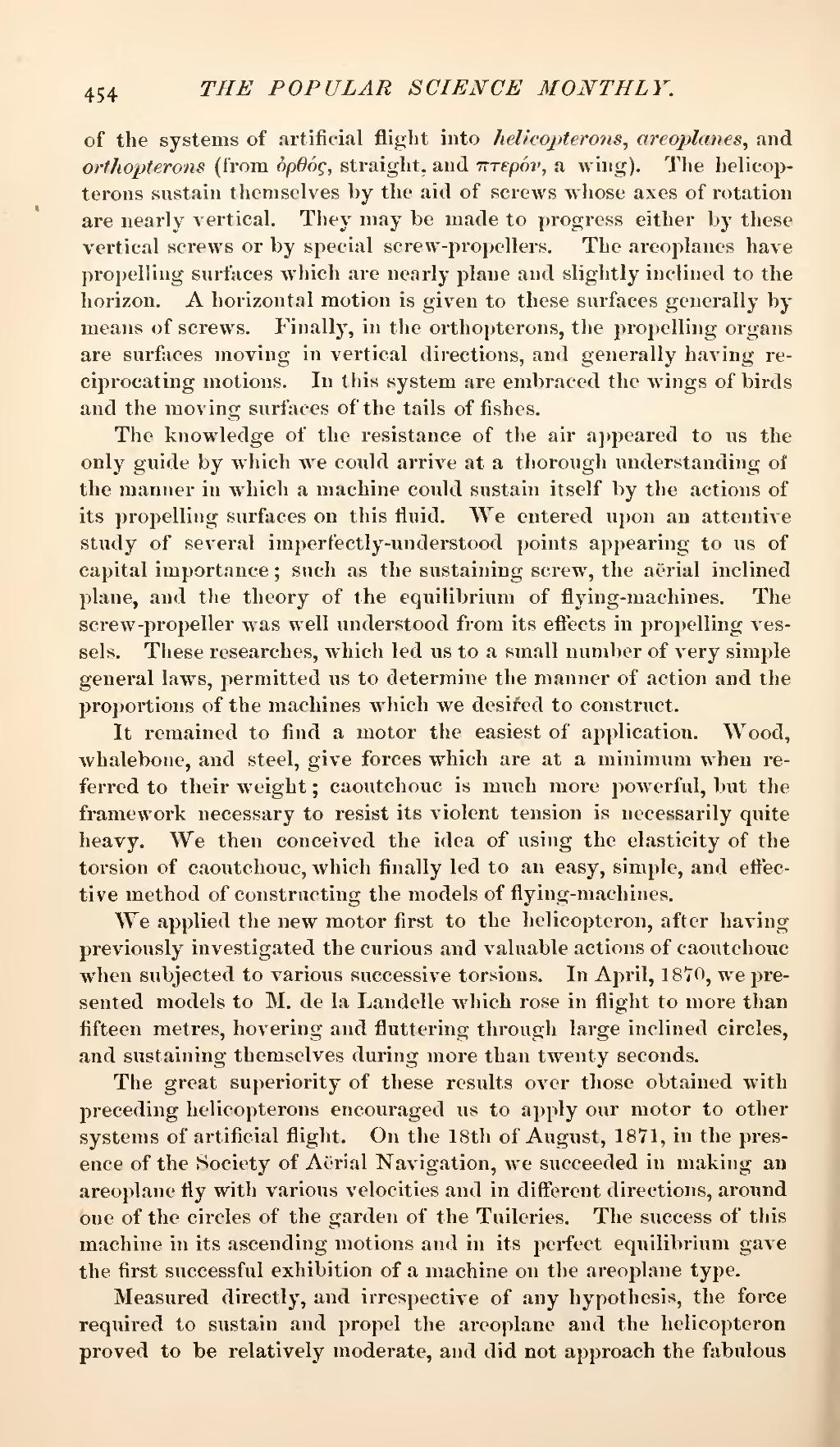of the systems of artificial flight into helicopterons, areoplanes, and orthopterons (from ὸρθός, straight, and πτερόν, a wing). The helicopterons sustain themselves by the aid of screws whose axes of rotation are nearly vertical. They may be made to progress either by these vertical screws or by special screw-propellers. The areoplanes have propelling surfaces which are nearly plane and slightly inclined to the horizon. A horizontal motion is given to these surfaces generally by means of screws. Finally, in the orthopterons, the propelling organs are surfaces moving in vertical directions, and generally having reciprocating motions. In this system are embraced the wings of birds and the moving surfaces of the tails of fishes.
The knowledge of the resistance of the air appeared to us the only guide by which we could arrive at a thorough understanding of the manner in which a machine could sustain itself by the actions of its propelling surfaces on this fluid. We entered upon an attentive study of several imperfectly-understood points appearing to us of capital importance; such as the sustaining screw, the aerial inclined plane, and the theory of the equilibrium of flying-machines. The screw-propeller was well understood from its effects in propelling vessels. These researches, which led us to a small number of very simple general laws, permitted us to determine the manner of action and the proportions of the machines which we desired to construct.
It remained to find a motor the easiest of application. Wood, whalebone, and steel, give forces which are at a minimum when referred to their weight; caoutchouc is much more powerful, but the framework necessary to resist its violent tension is necessarily quite heavy. We then conceived the idea of using the elasticity of the torsion of caoutchouc, which finally led to an easy, simple, and effective method of constructing the models of flying-machines.
We applied the new motor first to the helicopteron, after having previously investigated the curious and valuable actions of caoutchouc when subjected to various successive torsions. In April, 1870, we presented models to M. de la Landelle which rose in flight to more than fifteen metres, hovering and fluttering through large inclined circles, and sustaining themselves during more than twenty seconds.
The great superiority of these results over those obtained with preceding helicopterons encouraged us to apply our motor to other systems of artificial flight. On the 18th of August, 1871, in the presence of the Society of Aërial Navigation, we succeeded in making an areoplane fly with various velocities and in different directions, around one of the circles of the garden of the Tuileries. The success of this machine in its ascending motions and in its perfect equilibrium gave the first successful exhibition of a machine on the areoplane type.
Measured directly, and irrespective of any hypothesis, the force required to sustain and propel the areoplane and the helicopteron proved to be relatively moderate, and did not approach the fabulous
